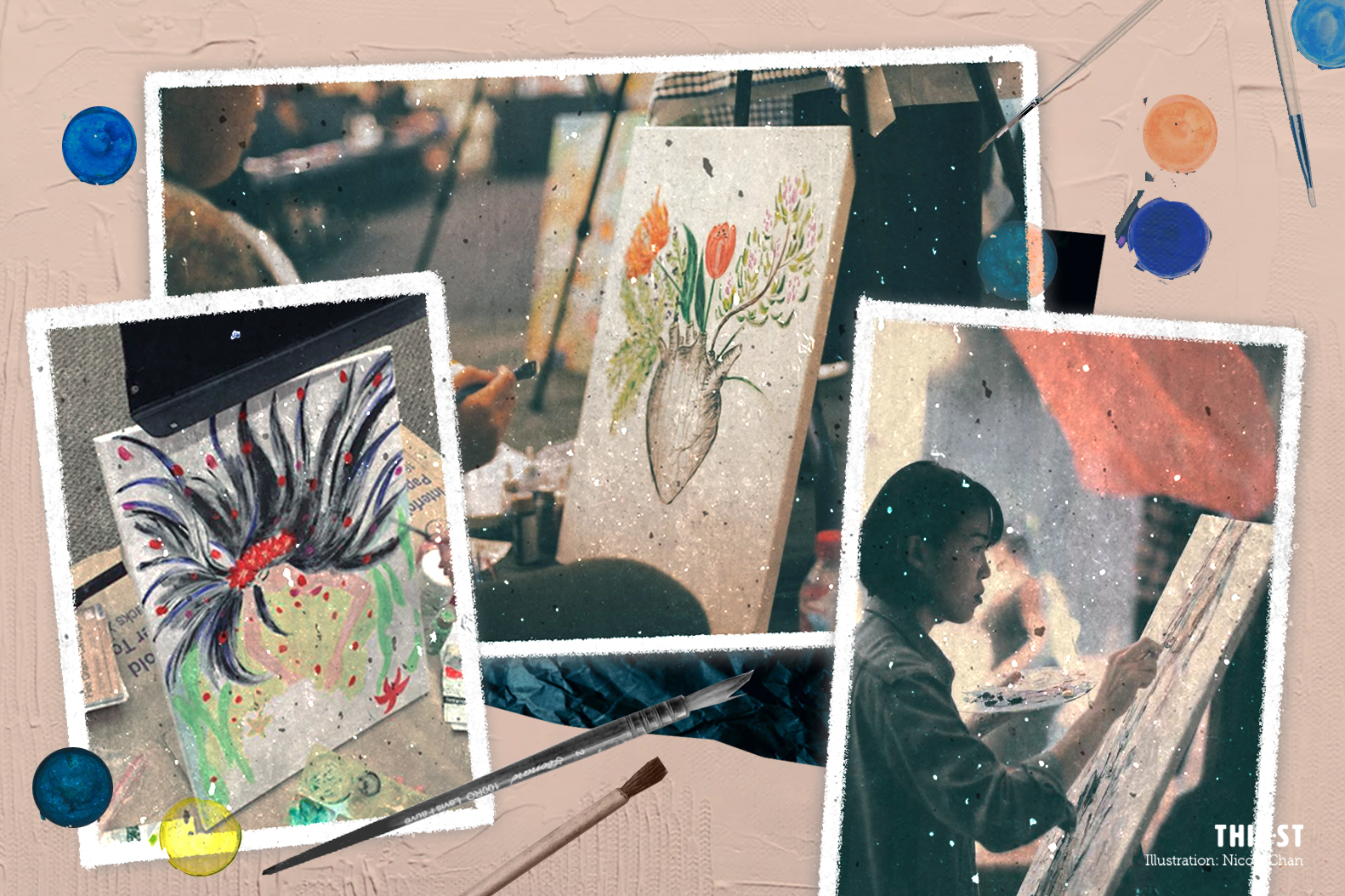What is prophetic art and what makes it different from non-prophetic art?
Daniel: To me, prophetic art conveys the heart of our Father in visual form. The visual imagery and accompanying messages are inspired by the Holy Spirit.
In 1 Corinthians 14:3, the primary function of prophetic ministry was to strengthen, encourage and comfort others. To me, prophetic art serves the same purpose.
All forms of art are a means to convey a message that comes from the artist’s soul or experience. But what makes prophetic art different, for me, is the source and what it can achieve.
Prophetic art and its messages come from the Lord.
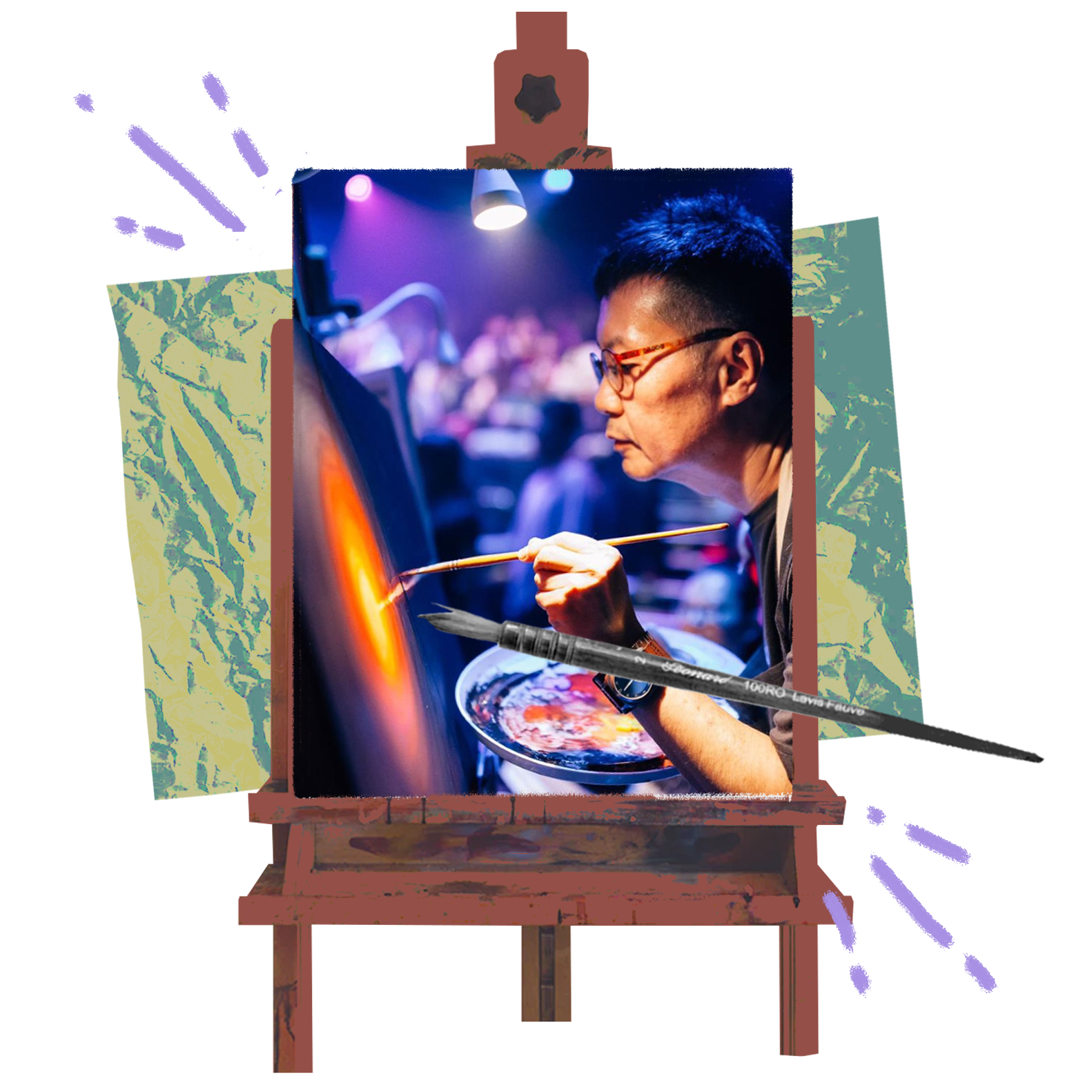
Katherine: While many people have different definitions, mine is simply: “Prophetic art is art that communicates the heart of the Father.”
I think art itself is prophetic. When I say prophetic, it means that it communicates something that connects hearts. To know what differentiates God-inspired art from something that is not God-inspired, you can consider whether that piece of art communicates the heart of the Father.
Does it bring goodness, encouragement and edification?
Prophetic art is art that communicates the heart of the Father.
Weish: Art, in general, is a medium of expression without speech. It can be a commentary on culture, politics and the workings of the inner mind.
Prophetic creativity is marrying that with the divinity of who God is. The way I have chosen to define “prophetic creativity” is that it is a means to declare who God is – past, present and future.
I personally say “worship painting” instead of “prophetic art” as I see prophetic art as a physical demonstration of my worship.
Kingdom creativity declares God’s divinity.
What was your first experience with prophetic art like?
Daniel: My first platform painting experience was during a prayer meeting in 2009.
I asked God for a download, and He showed me the hand of Christ that was nailed on the Cross. The blood that was dripping down formed the words “I love you”.
I painted it during the service, and a few members of the church shared that the words looked like Arabic writing. To my surprise, it was announced that one of the prayer items that evening was to pray for the Middle East!
I believe the picture was a prophetic declaration of Christ’s love for all the people in that region.
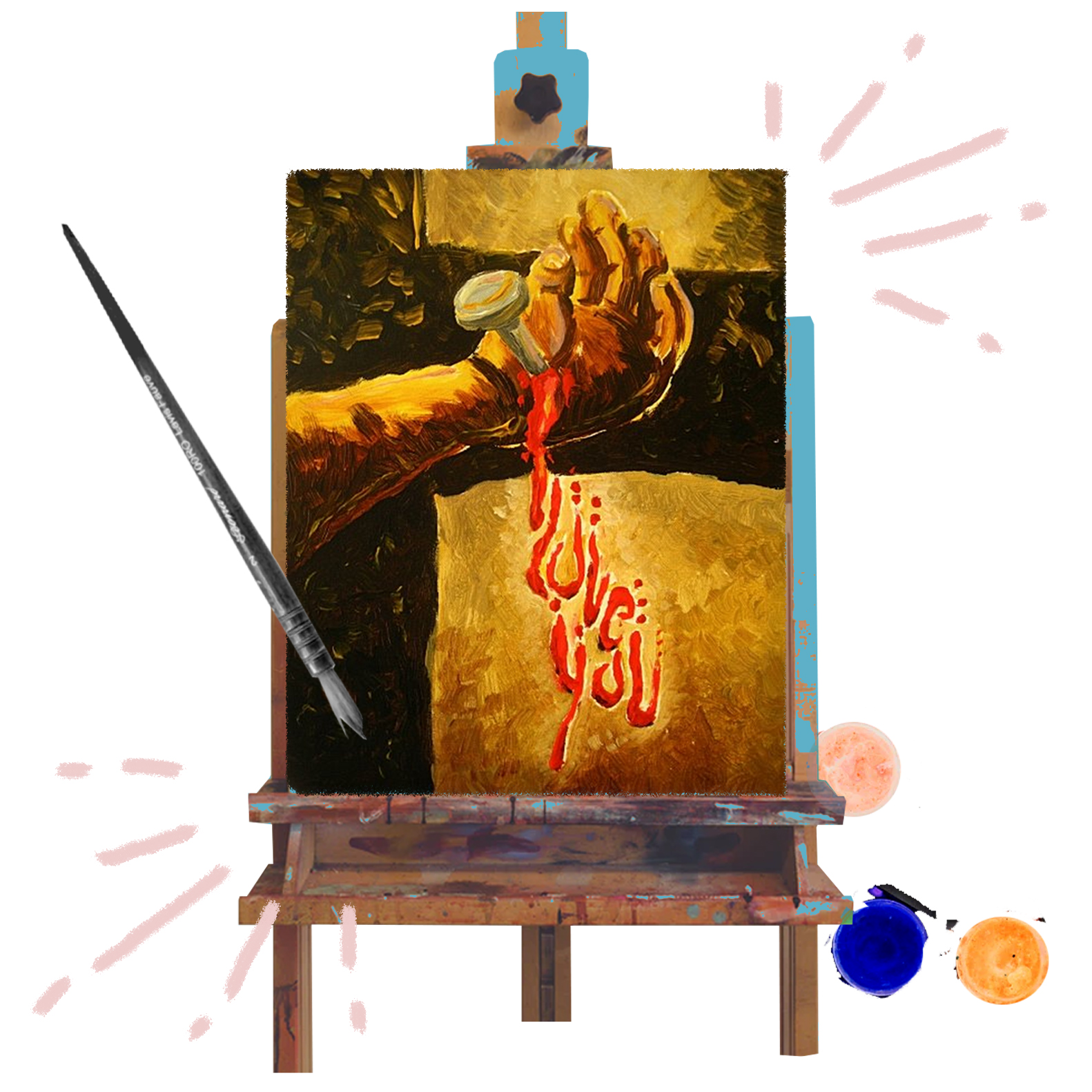
Katherine: When I stepped into my identity as a daughter of God, I wanted to co-create with my Father and worship Him through art.
So I drew, painted and shared my work on Facebook. People commented that they were touched by my picture and asked me what the message behind it was.
I told them what I was thinking about while creating the artwork. They said it spoke to them and their struggles, and they thanked me for sharing it.
So it started out really small. I wasn’t even thinking about it being a platform. I never thought that one day I would use my art as a tool for evangelism. It started out as just simply enjoying that process of creating with God.
Weish: I was attending a Christian gathering with my family in Hong Kong and saw that there was a table set up for people to draw or paint if they had received a vision from the Lord. I was curious and decided to try it.
It took me about three days to complete that tiny painting, but it opened my eyes to a new form of expression of my worship and praise.
Over a few years, I got permission from my pastors to try live-painting during church services.
Can you share a time when God used your gift to speak to someone or a particular situation?
Daniel: During a prophetic art ministry session, the Lord showed me an image of a pair of scissors with sharp ends. On top of them stood a lady and Jesus – they were holding hands and dancing.
The picture meant that the Lord was with this lady even in dicey situations and she could hold on to Him and celebrate in the face of danger.
I showed the drawing and shared the message with that lady after she came into the room, and she was really shocked! She said her marriage was very rocky and every day was spent literally living on the edge of danger – exactly like what was drawn!
She was very encouraged and comforted to know that the Lord was with her, and that she could find rest and even joy in Him.
Weish: I was told that someone had shared over Facebook about how my painting impacted him during a conference.
He was praying for the older generation and the empowerment of the next generation when he saw that I had let a child join me on stage to paint.
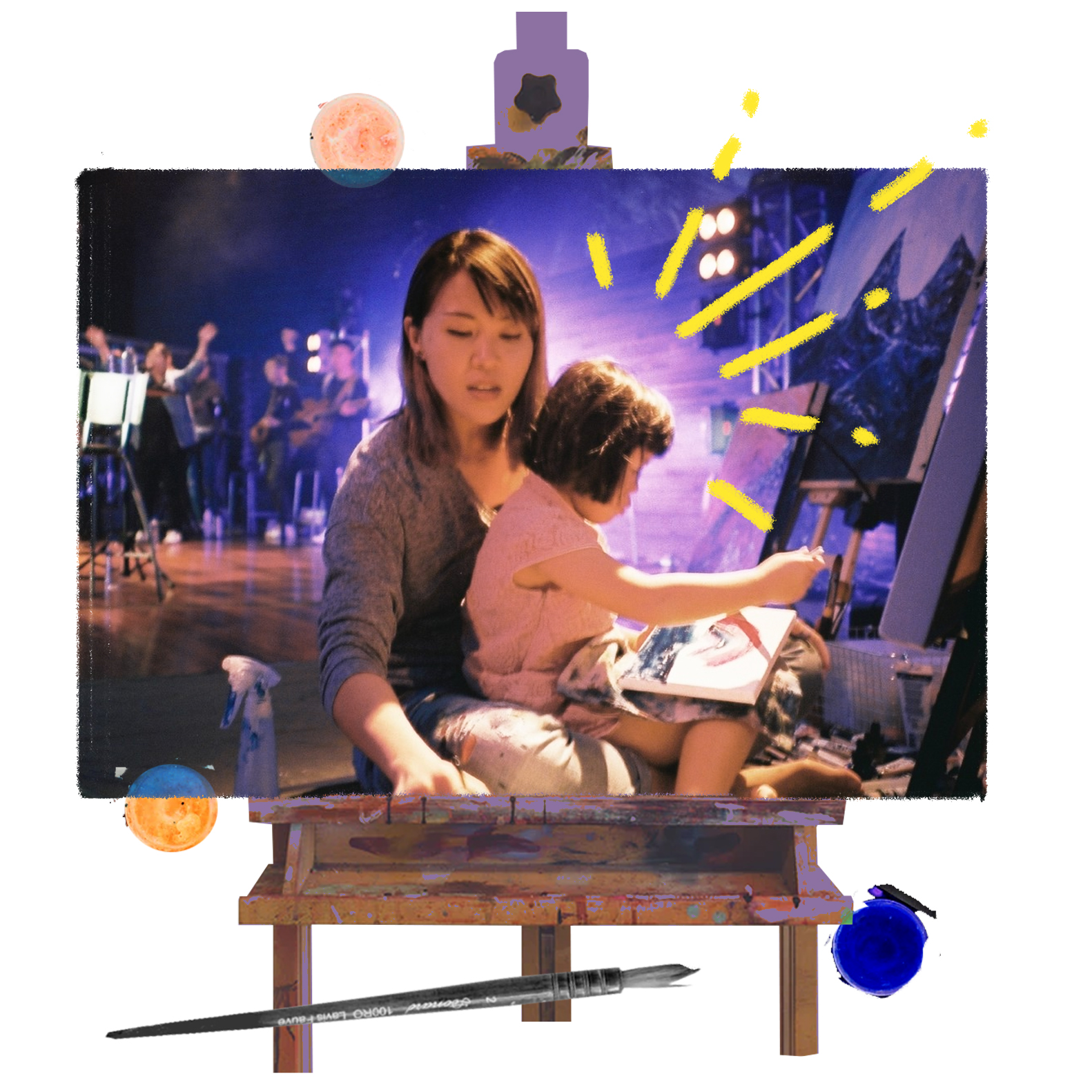
He perceived that the bright red and yellow streaks the child painted across my initial blue streaks represented the craziness and creativity that the next generation brings, while the blue represented the labour of the previous generation.
The image spoke to him. He saw that it was only together on the canvas that the different colours (generations) could make sense.
Katherine: We once received an assignment to create cards for a pre-believing family as a birthday gift.
The recipient broke into tears after receiving the art piece and reading the message behind it. I can’t remember what I wrote, but I was told it spoke directly to her family situation.
The family was initially very resistant to the gospel, but after this incident, they became much more open. They also attended a friend’s baptism the next day, though they initially turned down the invitation.
The whole family then came to know Christ after two days. They cleared out their idols at home, and framed up the two prophetic art pieces and put them in place of where the idols were. They said the art pieces would now be a reminder for them of God’s love.
Can only certain people with specific gifts or a special connection with God become prophetic artists?
Katherine: Anyone can create a piece of prophetic art that speaks the Father’s heart. It’s not only certain people with specific gifts and talents, or a special connection with God.
I believe that someone who can draw a stickman can also be used to minister.
But in my opinion, not everyone can immediately be called a prophetic artist because I feel that the journey is extremely important.
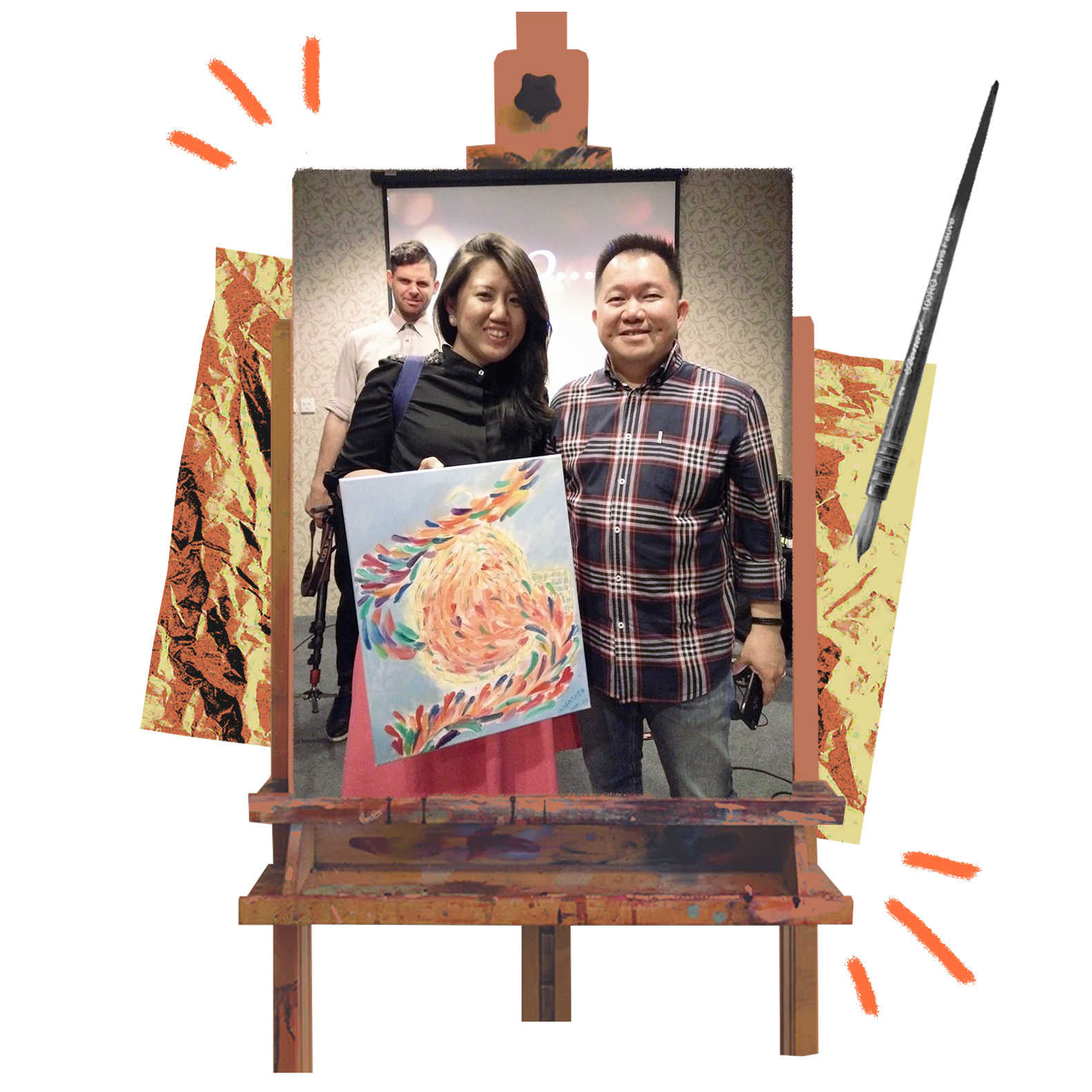
Daniel: A disciple of Christ who moves in the gift of prophecy and can do simple drawings (yes, even a stickman) – this person is a prophetic artist!
A prophetic artist, just like all other children of God, is connected with Him through the finished work of Christ.
I believe that someone who can draw a stickman can also be used to minister.
Prophetic artists are not “spiritual superheroes” with some enhanced ability to hear God, nor must they have the artistic skill of Picasso.
The most important thing as a prophetic artist is to know and to be known by God, and have his or her identity deeply rooted in His truth.
What is the process of creating prophetic art like?
Daniel: Just ask God what is in His heart for the recipients, and wait upon Him to reveal the image and message.
Then faithfully draw or paint it out and share the accompanying message. Never be in a hurry or be pressured to do it. Always be still in His presence.
Katherine: Sometimes it’s organic and sometimes I have an image in my head before I begin – I just give God the space to move.
I usually start by asking God: “God, I want to create with You today, what should I draw?”
But it’s not like I hear God audibly telling me to choose the colour blue. It’s more of resting and knowing that when I’m creating, He’s there with me and that I’m secure and safe.
You need to have that security in your identity in God, and allow the process to minister to you first. So I start in that safe space to work within myself and draw close into an intimate relationship with God.

Weish: There are days when it’s super fun, and I get massively excited about painting prophetically. But most days it’s grit, practice and the understanding that art (and worship) isn’t about chasing a feeling.
It’s tough, especially because emotions are extremely good motivators. But spiritual discipline includes actual discipline, which means fighting through the bad days of ugly work, self-doubt and comparison.
Any advice for youths who are interested to create prophetic art?
Daniel: For anyone who is interested to create prophetic art, I will say: “This is all about the King, and never about you.”
If you wish to serve God, then let your heart be right before Him; do not harbour unforgiveness and receive healing from any wounds of rejection and disappointment.
Know Him and His words, establish your identity in Christ and humble yourself – always.
This is all about the King, and never about you.
When you receive an image or message but don’t understand it, just remember it’s for someone else. You just need to faithfully carry out your assignment and let the Holy Spirit speak through the art and message.
As children, we are all learning, and let me lovingly say this: “It is okay to make mistakes when doing prophetic art.”
Do not worry, God will not be angry with you. Prophetic art is not your identity, it is a tool to bless God’s people. You can lay it down when you need to heal and recuperate.
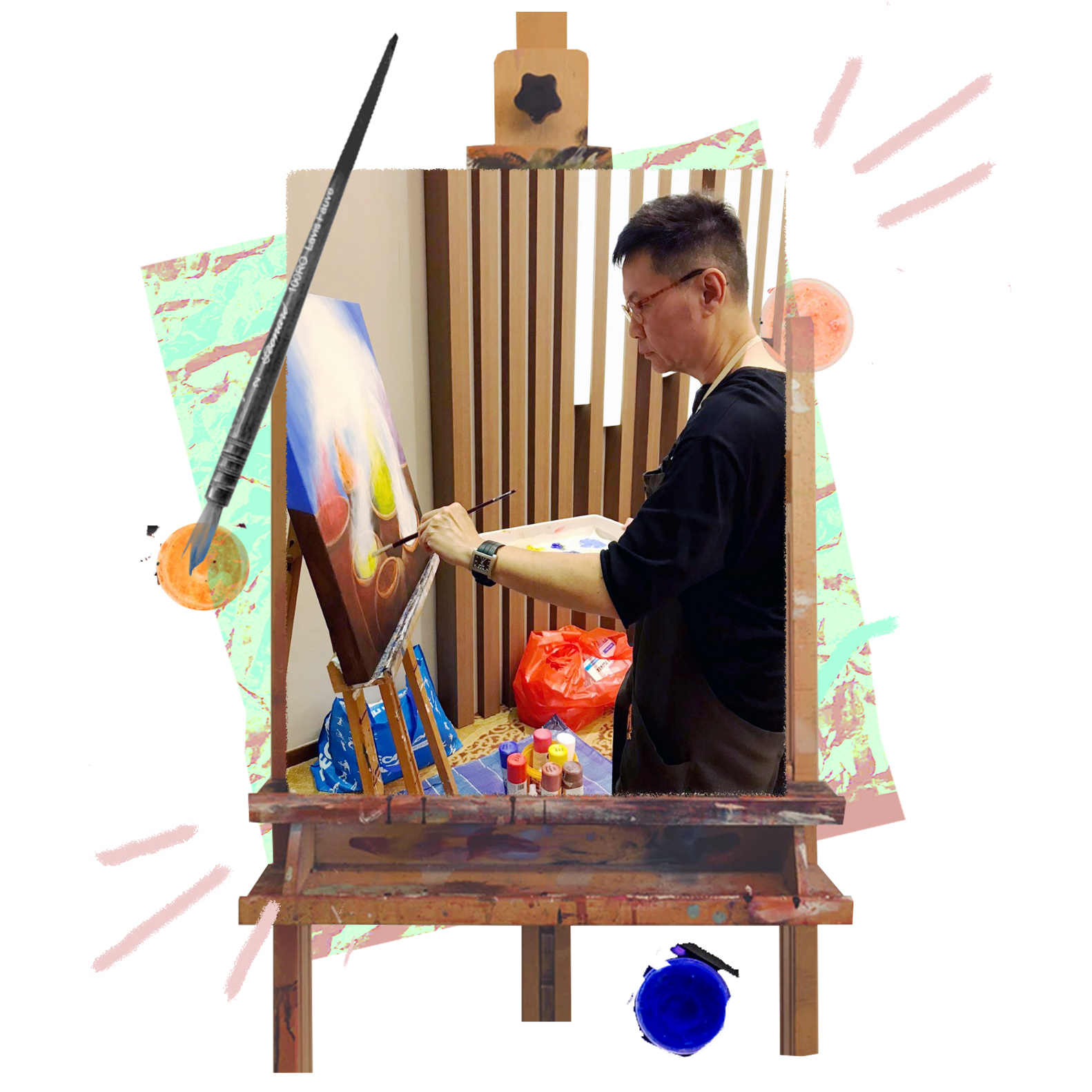
Weish: I think anyone can create art as a means of worship and quiet time with God.
You don’t have to be amazing at art to do it: I once had a student fill an entire drawing block with circles. She cried throughout her drawing because God was speaking to her in that space.
That said, if you are sincerely choosing to pursue prophetic art, you should confront your motivations: Who are you really doing this for? Remember that creativity is not an island. Stay accountable to leadership and friends who encourage but also confront.
Hone your craft as sometimes you do need basic skills to be able to translate the pictures in your mind onto paper. Practise hard so that when the Holy Spirit moves, there is no resistance from you to move with Him. Don’t be afraid to go for courses, exhibitions or even talk to strangers for tips.
Lastly, don’t beat yourself up over the bad days.
Katherine: Your relationship with God is number one. The Holy Spirit is the one who will guide you, and we should always understand the character of God.
If the art isn’t communicating the heart of the Father then we need to make adjustments to it. We always go back to the heart.
The heart of the person who is communicating and ministering through prophetic art (or other vehicles) needs to be healthy. We need to know our identity in Christ.
Because in the area of prophecy, if you can’t hear for yourself – how can you hear for other people?
We don’t have to be on a platform right away and start ministering immediately. It’s okay to start by practising with a close circle of friends, asking them if certain art pieces meant anything to them.
If they say yes, then praise the Lord. But if they say no, then we need to be able to admit that maybe we heard it wrongly.
It’s a journey and process – we need to practise learning how to hear from God.
- What has God been speaking to you about?
- What are some gifts and talents God has given you?
- How can you use these gifts to share God’s message to the world?


